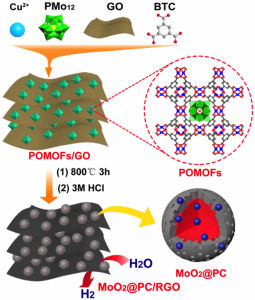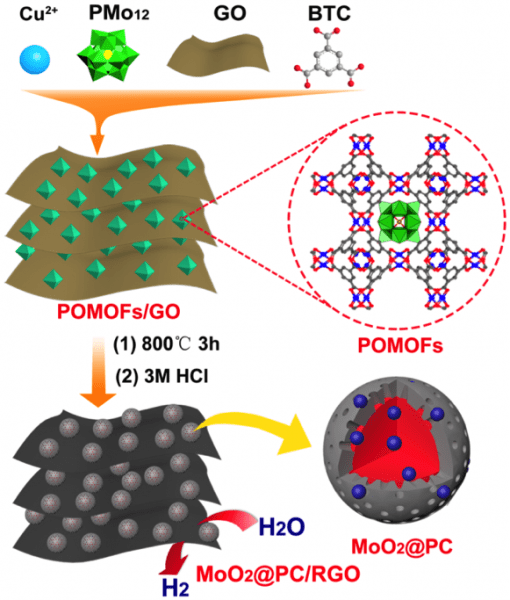 Hydrogen has been considered as an efficient clean energy since it may be the alternatives to fossil fuels. Large-scale production and effective storage of hydrogen are the important research topics. In this field, the electrolysis of water is an environmentally friendly technique for hydrogen production. However, Pt-based materials that are used as catalysts for hydrogen evolution reaction (HER) have been severely restricted for the industrial production because of the high cost of noble-metal Pt. Therefore, lowering the overpotential (η), constructing and preparing the high-efficient non-noble metal electrocatalysts must be urgently addressed to improve the HER performance. Recently, researchers have reported abundant of non-noble metal and metal-free HER catalysts and made an important breakthrough. It is noteworthy that the transition metal sulfides and carbides show the remarkable HER electro-catalytic activities. Nevertheless, the complicated techniques, high cost and low yield for the most of these materials have caused the difficulties of industrialization. Thus, searching for a cheap and effective electrocatalyst has become a research hotspot in this field.
Hydrogen has been considered as an efficient clean energy since it may be the alternatives to fossil fuels. Large-scale production and effective storage of hydrogen are the important research topics. In this field, the electrolysis of water is an environmentally friendly technique for hydrogen production. However, Pt-based materials that are used as catalysts for hydrogen evolution reaction (HER) have been severely restricted for the industrial production because of the high cost of noble-metal Pt. Therefore, lowering the overpotential (η), constructing and preparing the high-efficient non-noble metal electrocatalysts must be urgently addressed to improve the HER performance. Recently, researchers have reported abundant of non-noble metal and metal-free HER catalysts and made an important breakthrough. It is noteworthy that the transition metal sulfides and carbides show the remarkable HER electro-catalytic activities. Nevertheless, the complicated techniques, high cost and low yield for the most of these materials have caused the difficulties of industrialization. Thus, searching for a cheap and effective electrocatalyst has become a research hotspot in this field.
Recently, a joint team led by Prof. Ya-Qian Lan at Nanjing Normal University cooperating and Prof. Shu-Hong Yu at the University of Science and Technology of China have prepared the phosphorus doped porous carbon coated molybdenum dioxide-reduced graphene oxide hybrid material (denote as MoO2@PC-RGO), which is prepared by carbonizing polyoxometalate-based metal-organic frameworks/graphene oxide composite (POMOFs/GO) precursors at a relatively low temperature. POMOFs have the advantages of both MOFs and POMs, in which MOFs could provide regular carbon array derived from the ligands and POMs could function as the Mo and P source. In addition, the agglomeration of MoO2 can be avoided by confining the carbon skeleton, which is conducive to prepare the small-sized and uniform nanomaterials. These nanoscale materials can improve the activities and stabilities of HER catalysts. The MoO2@PC-RGO nanocomposite displays an excellent HER activity in acidic solution approaching that of commercial 20% Pt/C. So far, it is one of the best high performance catalysts among the reported non-noble metal catalysts for the HER. Besides, this material can be synthesized in quantity for the industrial production that is expected to replace the commercial Pt-based catalysts. This work provides a new idea to synthesize high performance catalysts and understand the relationship between construction and property.

















